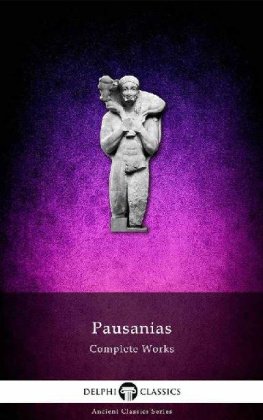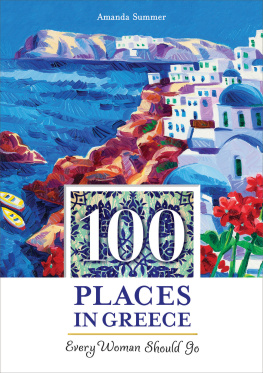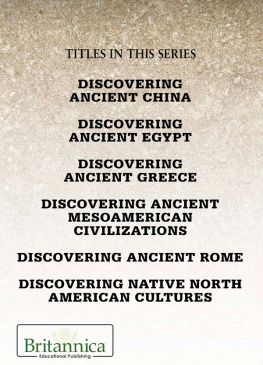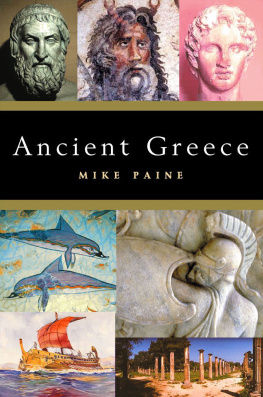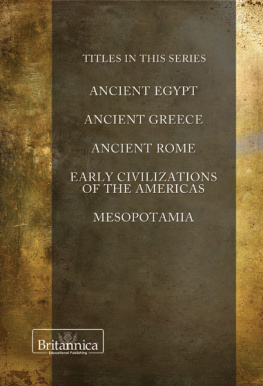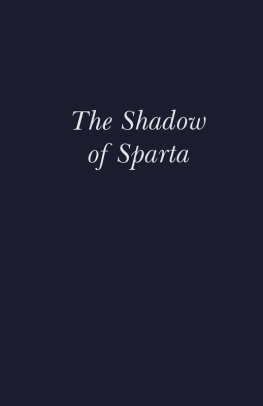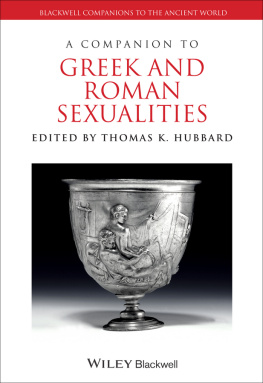
ADVISORY EDITOR: BETTY RADICE
GUIDE TO GREECE VOLUME 2
P AUSANIAS was a doctor from Greek Asia Minor who devoted ten or twenty years to travelling in mainland Greece during and after the reign of Hadrian, in the brief golden age of the Roman Empire (second century AD ). It was during this time that he wrote a detailed account of every Greek city and sanctuary with historical introductions and a record of local customs and beliefs.
Peter Levi, a classical scholar, archaeologist and poet, was born in 1931. He has also translated The Psalms for the Penguin Classics, the poems of Yevtushenko (with R. Milner-Gulland) for the Penguin Modern Poets and edited the Penguin Classics edition of Johnsons A Journey to the Western Islands of Scotland and Boswells The Journal of a Tour to the Hebrides. His book The Light Garden of the Angel King, an account of his travels in Afghanistan, is published in the Penguin Travel Library, and he has also written The Pelican History of Greek Literature.
PAUSANIAS
GUIDE TO GREECE
VOLUME 2
Southern Greece
TRANSLATED WITH AN INTRODUCTION
BY PETER LEVI
Illustrated with drawings from Greek coins
by JohnNewberry
Maps and plans byJefferyLacey
PENGUIN BOOKS
PENGUIN BOOKS
Published by the Penguin Group
Penguin Books Ltd, 80 Strand, London WC2R 0RL , England
Penguin Group (USA) Inc., 375 Hudson Street, New York, New York 10014, USA
Penguin Books Australia Ltd, 250 Camberwell Road, Camberwell, Victoria 3124, Australia
Penguin Books Canada Ltd, 10 Alcorn Avenue, Toronto, Ontario, Canada, M4V 3B2
Penguin Books India (P) Ltd, 11 Community Centre, Panchsheel Park, New Delhi 110 017, India
Penguin Group (NZ), cnr Airborne and Rosedale Roads, Albany, Auckland 1310, New Zealand
Penguin Books (South Africa) (Pty) Ltd, 24 Sturdee Avenue, Rosebank 2196, South Africa
Penguin Books Ltd, Registered Offices: 80 Strand, London WC2R 0RL , England
www.penguin.com
This translation first published 1971
Reprinted with revisions 1979
Copyright Peter Levi, 1971
Coin drawings copyright John Newberry, 1971
All rights reserved
Except in the United States of America, this book is sold subject to the condition that it shall not, by way of trade or otherwise, be lent, re-sold, hired out, or otherwise circulated without the publishers prior consent in any form of binding or cover other than that in which it is published and without a similar condition including this condition being imposed on the subsequent purchaser
ISBN: 978-0-14-196484-3
FOR
NANCY SANDARS
Quomodo obscuratum est aurum, mutatus est color optimus, dispersi sunt lapides sanctuarii in capite omnium platearum?
Lamentations of Jeremiah 4, 1
The work of which this is a translation was conceived in an age of dictatorship and false enlightenment, but is impregnated with that sense of a persistent religion, of the inevitable victories of reason, and of the godlike resurrections of liberty and democracy in Greece which make Greek stones noble.
CONTENTS
LIST OF FIGURES
.
.
.
.
ACKNOWLEDGEMENTS
Any commentary on Pausanias, even the thinnest, must rest on a huge structure of other peoples knowledge; no one could possibly be his own expert in everything Pausanias talked about. It is inevitable that in some field or other, perhaps in many, one will have missed important recent or old contributions to the understanding of what Pausanias wrote. If I have made mistakes of this kind (as I am bound to have done) I would be most grateful to hear of them, and in the cause of public utility to correct them either in a future edition of this book or at least in a much fuller commentary on which I am now working.
I would like to thank friends and colleagues for tolerance and for assistance. I owe more than I can express to the kindness and encouragement of Professor E. R. Dodds and Professor Eduard Fraenkel. Without their blessing I should not have undertaken this or any other work on a classical author. This book owes its existence also to the friendly interest of Professor Martin Robertson and Mr John Boardman, and most of all to the delightful and inspiring conversation and sympathetic friendship of Miss Nancy Sandars.
It is hard to know how to thank ones friends whom one feels one ought always to be thanking, but over this book I do owe particular thanks to Mr John Newberry for his drawings, to Mr Philip Sherrard and to Canon Francis Bartlett, to Mr Cyril Connolly, Mr and Mrs Watson, Mr George Pavlopoulos, Mr Takis Loumiotis and to Sir Maurice Bowra. Within the charmed circle of Campion Hall, links are too close for thanks to be permitted. Finally I should like to express my sincere thanks to the members of the British School of Archaeology in Athens in 1965-7 for many constant pleasures and for constant and most practical help and advice, particularly to Mr Geoffrey Waywell, Miss Jeffery and Lord William Taylour.
Campion Hall, Oxford September 1969
INTRODUCTION
Virtually everything we know about the author of this book depends on the internal evidence of the book itself. Pausanias seems to have lived for a time in an inland Greek city near Mount Sipylos in Asia Minor, presumably Magnesia, and was perhaps born there. He had already passed the middle of his life when he began to write, and worked on his Guide toGreece for at least fourteen years between the late fifties and the late seventies of the second century A.D. , in what seems to us to be the lucid and inspiring afterglow of the Antonine age. He wrote for Roman philhellenes in the Greek language, sometimes elaborately and sometimes carelessly there are passages in his work which read like hasty dictation at a miraculously chosen moment. Nero had stolen some treasures, Akarnania and Achaia were poverty-stricken and depopulated to build Augustuss great Roman cities: Thebes of course had been broken to pieces by the Macedonians and ancient Corinth by Rome: but every other important monument of Greek antiquity was still standing in his time. Here and there a temple had been moved bodily, ivy had covered an inscription, a roof had fallen in, but his was the only lifetime in which the final embellishments of Hadrian and of Herod of Athens could be seen, yet the seventeen centuries of neglect had not begun. Pausanias was not the first to write this kind of book; Strabo, writing under Augustus, and the fragments of Dikaiarchos are enough to prove it was a recognized genre. But the value of Pausanias to archaeologists and to all classical scholars is unique and astonishing.
Of course he used textbooks and compilations which existed in his day but which have since perished. The marked variations in his prose style often reflect a change of sources. But we know that he actually visited the sites he talks about, since he tells us so in so many words. His criteria for what to believe and what not to believe involved observation and personal reasoning, but they were also conventional: they are clearly stated by his contemporary Artemidoros (Oneirocrit. 4, 47) with some of the same examples. In Athens he belonged to a circle of almost professional antiquaries; he worked in great libraries; he consulted the sacred officials and city guides whom Plutarch describes at Delphi and who existed in every city. Pausanias seems to have been a doctor; he was interested in questions of anatomy and personally devoted to the healing god Asklepios. When he was old he became addicted to bird-watching, and complained about steep hills and bad roads. He had the kind of interest in natural science one might expect in an early member of the Royal Society. As a young man he seems to have been an expert on Homeric questions, but the bitterness and malice of scholars in this field drove him to abandon literary criticism.


